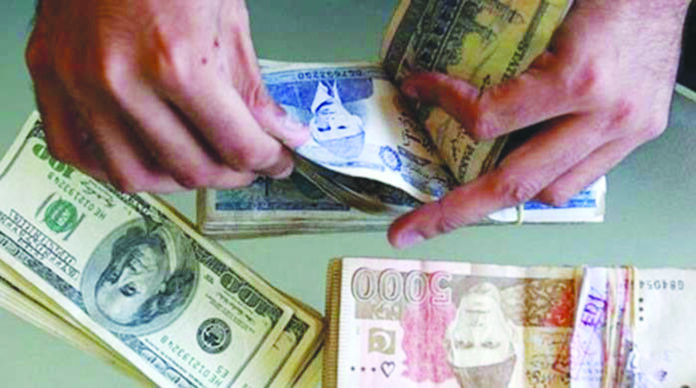A German proverb rightly reflects Pakistan’s debt trajectory as “He who is quick to borrow is always slow to pay”. But the irony is that we are going even further: we are quick to borrow with no plan of repayment. A brief analysis of Pakistan’s debt issue is given below.
Pakistan’s debt is like a balloon. It keeps on expanding. Here it should be noted that the country’s debts are different from any individual’s debt. Pakistan’s total public debt comprises; domestic debt and external debt. A safe estimate of Pakistan’s total debt is approximately Rs 65 trillion, out of which external debt (converted in rupees) is near Rs 40 trillion and domestic debt is nearly Rs 35 trillion. This makes every person living in Pakistan a debtor of approximately Rs 55,000.
The basic cause of debt is the inability of the country to generate revenues locally, as well as in international markets. The former is the corollary of low tax collection and the latter is the result of low exports/high imports. The twin deficits, fiscal deficit and current account deficit, both necessitate borrowings.
Pakistan is more affected by domestic debt than the external debt. Pakistan’s external debt mainly falls under the category of medium- to long-term loans. Except the debt servicing headache, the external debt of Pakistan up to 70% is stable and can not turn Pakistan into a defaulting country. Thus the actual risk as regards external debt is lower than the public perceptions.
The real problem lies in domestic borrowings, which are easy to avail but hard to retire. The Government can print money to pay out domestic lenders but it will be a futile exercise as it will result in inflationary pressures in the market along with discouragement of the private sector in the financial market.
This is the case with all governments regardless of any political leanings. Accordingly, we need to chalk out a sustainable plan for restricting the requirement of domestic debt. The foremost task is to attain political consensus on economic policy making. Unless and until there is agreement on certain financial principles including debt management, there would be no improvement.
The loss-making state enterprises and the never ending circular debt need to be curbed on a sustainable basis. The recent efforts by the Privatization Ministry in initiating privatization agenda are commendable in this regard. In short, our country’s economy is obese and domestic debt is just like a rich-carb diet (easy to obtain and difficult to digest). In order to pierce this debt balloon, we have to adopt economic tightening.
Then comes the bitter pill of enhancing revenue and reducing non-development expenditure. Both steps are unpopular in the short term but there is no escaping them. Pakistan, in the next 10 years, at least Rs 8000 billion in annual tax collection are needed for fiscal deficit management.
The Fiscal Responsibility and Debt Limitation Act 2005 is devoid of any implementation. Its presence on the statute book without any serious implementation makes a mockery of law. It’s a good piece of legislation but laws are made to be enforced by the state, otherwise there is no need for wasting the ink and paper.
Unfortunately, Pakistan’s two key institutions, the State Bank of Pakistan and the Federal Board of Revenue, lack coordination. Both are stakeholders in debt management. Fiscal deficit raises domestic borrowing requirements, which raise interest rates, thus reducing the production potential and ultimately hitting exportability; hence a current account deficit. Therefore, no policy initiative can be successful without prior concurrence of SBP and FBR, and linkages between fiscal policy and monetary policy.
A Debt Utilization manifesto is a must for Pakistan. It is not a matter of choice, rather a compulsion, to design the manifesto of debt utilization prior to applying for debt, whether domestic or external. The peculiarity with Pakistan is that we only focus on obtaining debt and not utilizing it in productive ways. What to say of non-productive means, debt is obtained here for debt servicing, which again creates debt. Debt should be treated as a departure from normalcy; but in Pakistan debt reflects the normal state of the economy.
Furthermore, the loss-making state enterprises and the never ending circular debt need to be curbed on a sustainable basis. The recent efforts by the Privatization Ministry in initiating privatization agenda are commendable in this regard.
In short, our country’s economy is obese and domestic debt is just like a rich-carb diet (easy to obtain and difficult to digest). In order to pierce this debt balloon, we have to adopt economic tightening. For this, we need policy continuity, more domestic revenue collections and improvement in productivity/exportability. No doubt, the challenges are enormous but proactive management of debt contingent with political will can do wonders.


















